Are you in the market for flooring material? The chances are good that you will be faced with the choice of linoleum vs. vinyl flooring. Both are popular flooring options and are preferred for their general affordability compared to alternatives such as hardwood or ceramic tiles.
That said, there are important differences between the two flooring options that you should consider to select the best product for your needs. I wrote this guide to help you do just that. So, without further ado, let’s compare linoleum vs. vinyl flooring.
Table of Contents
What is Linoleum Flooring?
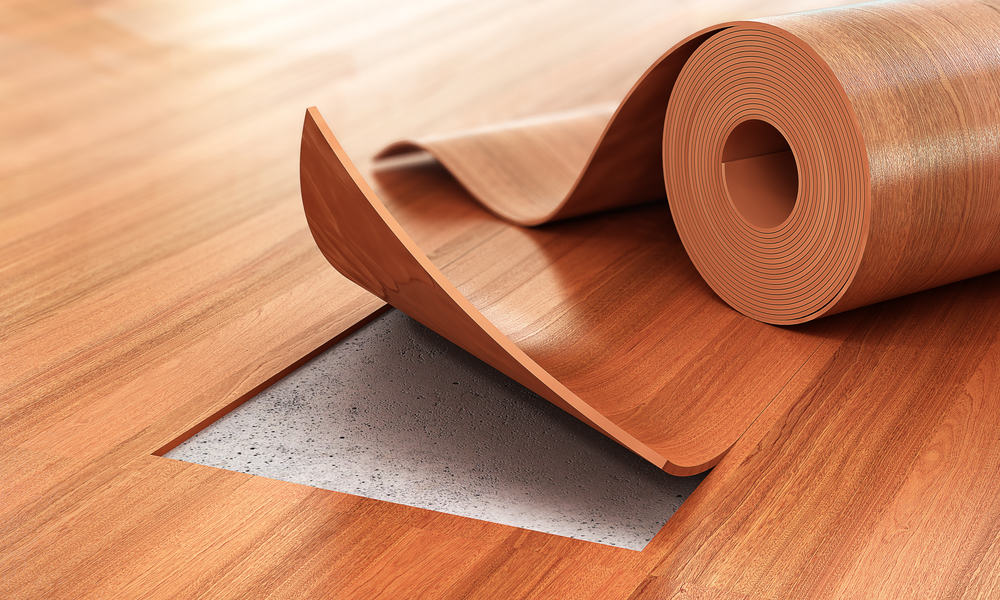
Linoleum is one of the earliest flooring materials discovered and used more than 150 years ago. The material was first made from linseed-based oil paint and was later mixed with biodegradable and renewable materials such as flaxseed, rosin, woof floor, and cork dust.
Today, linoleum is still made using natural ingredients, making it a popular choice among home builders and contractors looking for green construction material to cut down on the carbon output.
You will find linoleum sheets in 6 to 12-foot rolls. Plank sizes are typically 48 inches long, 6 inches high, and 18 inches wide.
As early as the 1800s, linoleum was used in hospitals and schools and was a popular choice for kitchen and bathroom flooring. But, this popularity faded away when other flooring alternatives such as hardwood, tiles, vinyl were introduced to the market.
Linoleum is making a comeback, though, as more and more people go green and opt for environmentally friendly construction materials. We’ll look at that in a bit.
What Is Vinyl Flooring?
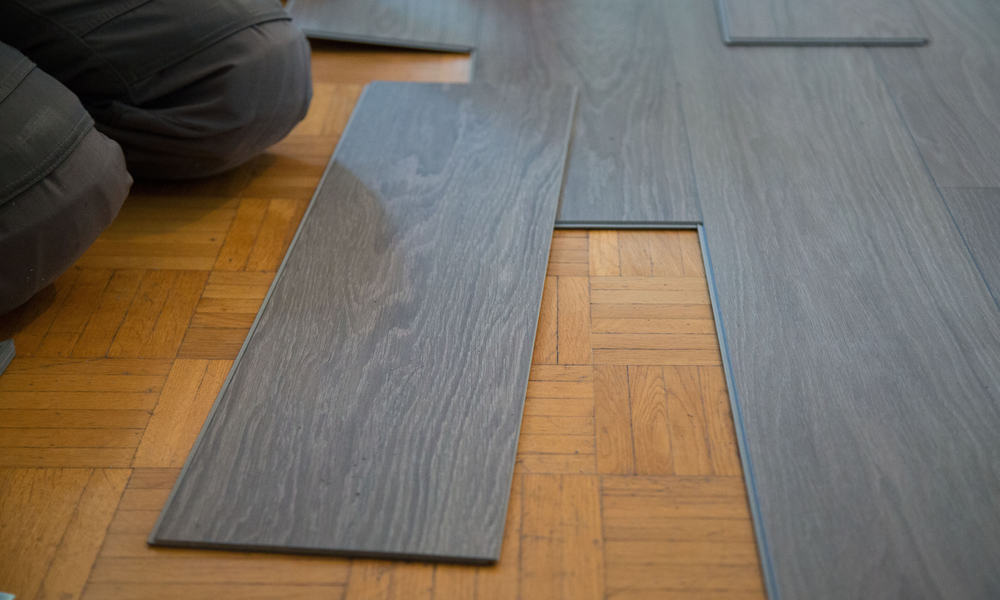
Vinyl replaced linoleum as the top flooring option starting in the 1920s, and by the 1960s, many commercial and residential buildings featured vinyl as a cheaper alternative to hardwood.
Vinyl flooring is made using polyvinyl chloride (PVC), which makes up the product’s core. The backing is made of fiberglass, and the top is covered by a resilient wear layer that acts as a protective barrier.
Vinyl sheets come in 6 to 12-foot rolls that can be cut into smaller pieces depending on the application. Planks are also available in 48 by 6 by 18 inches, while tiles come in 9 by 18 inches.
Unlike linoleum, which is manufactured from recyclable materials, vinyl is made using synthetic materials. That said, vinyl has a comparably longer life span and will serve you a long time before replacing the flooring, which reduced the impact on the environment.
Now that you have linoleum and vinyl flooring basics, let’s compare the two products and see how they stack against each other.
Side by Side Comparison: Linoleum vs. Vinyl Flooring
We’ll use the following criteria to compare linoleum vs. vinyl flooring:
- Appearance and texture
- Ease of installation
- Durability
- Longevity
- Comfort
- Cost
- Environmental impact
1. Appearance and Texture
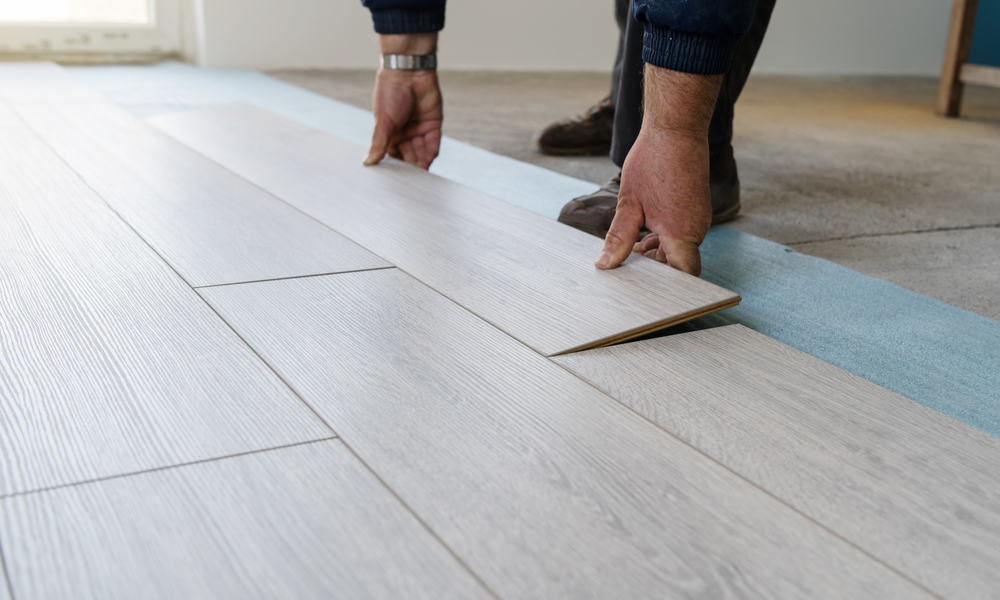
Linoleum and vinyl come in diverse styles and patterns, with the stone and wood-look being the most popular. The design and pattern on vinyl are printed onto the surface to create any desired texture and appearance.
Linoleum offers fewer design and texture options. But, the color used to dye linoleum goes all the way from the top, core and back. As such, it is harder to notice scratches on linoleum flooring.
On the other hand, vinyl is protected by a resilient wear layer, which keeps the flooring from fading and allows an extended life span. Linoleum may be more resistant to scratches, but its color fades faster.
Best Choice For Appearance And Texture: Vinyl
2. Ease of Installation
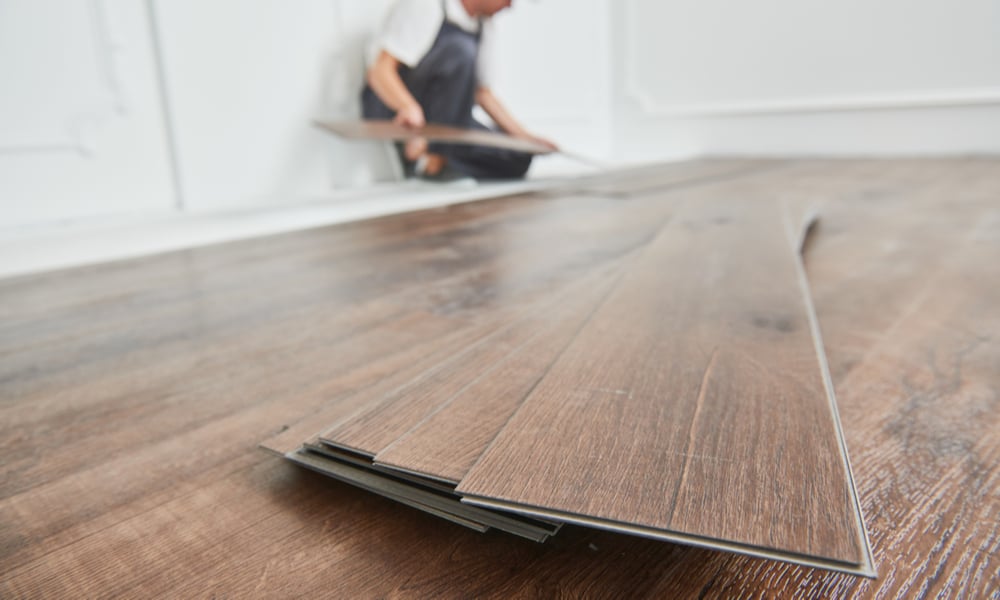
When choosing a flooring option, one of the factors you must consider is the ease of installation. Flooring that is particularly difficult to install will require you to hire a professional installer, which can bump up the cost of ownership.
Linoleum and vinyl both come in the form of tiles, planks, and sheets. Floating flooring, also known as interlocking or click and lock linoleum and vinyl, have medium to low installation difficulty. If you have basic handy skills, you can install both types of products on your own.
Vinyl and linoleum sheets need to be glued down, and this is where the installation differences can be seen the most. Linoleum is a much stiffer material, and the glue down sheets can be quite hard to work with and typically requires a professional installer.
On the other hand, vinyl sheets are much more flexible and easier to work with. Of all the vinyl flooring options, glue-down sheets are the most DIY-friendly.
Best For Ease Of Installation: Vinyl
3. Durability
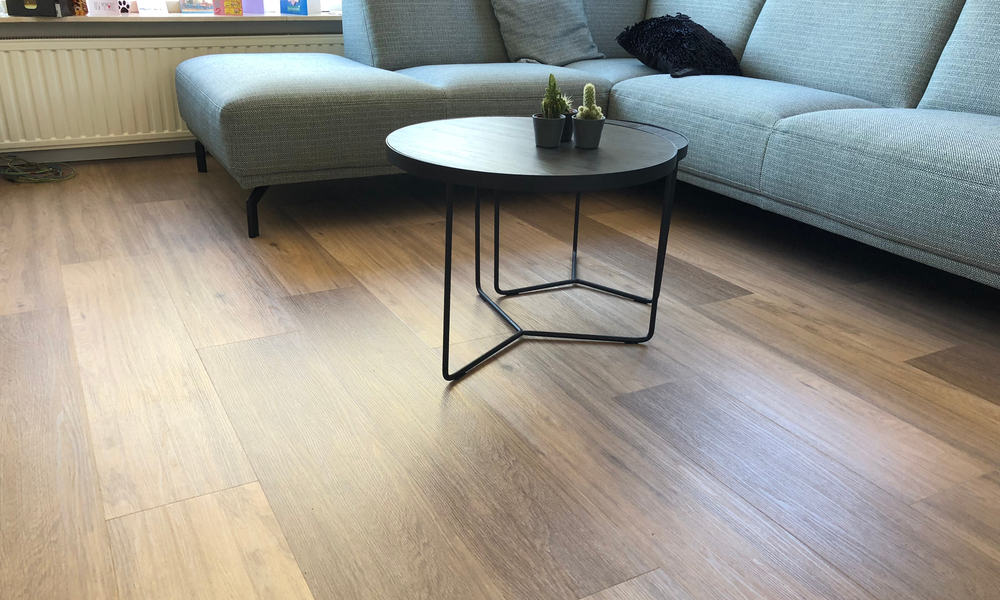
Both vinyl and linoleum are categorized as resilient flooring products. Linoleum generally has a longer lifespan but will fade faster and look older than vinyl flooring installed at the same time.
Linoleum is also softer, but the best part is that any dents or scratches will not be too obvious. Vinyl is a much studier product and will stand up to water, dents, and scratches due to the protection the wear-layer offers.
When it comes to moisture, vinyl does a better job of staying intact for longer when installed in moisture-prone areas such as the kitchen or bathroom. Waterproof vinyl flooring is available thanks to developments in modern flooring technology.
The surface of linoleum is water-resistant, but the flooring itself is not a good candidate for installing in the kitchen or bathroom as it does not stand up well to excessive moisture. The corners lift and curl when water seeps through the seams.
Best For Durability And Waterproofing: Vinyl
4. Longevity
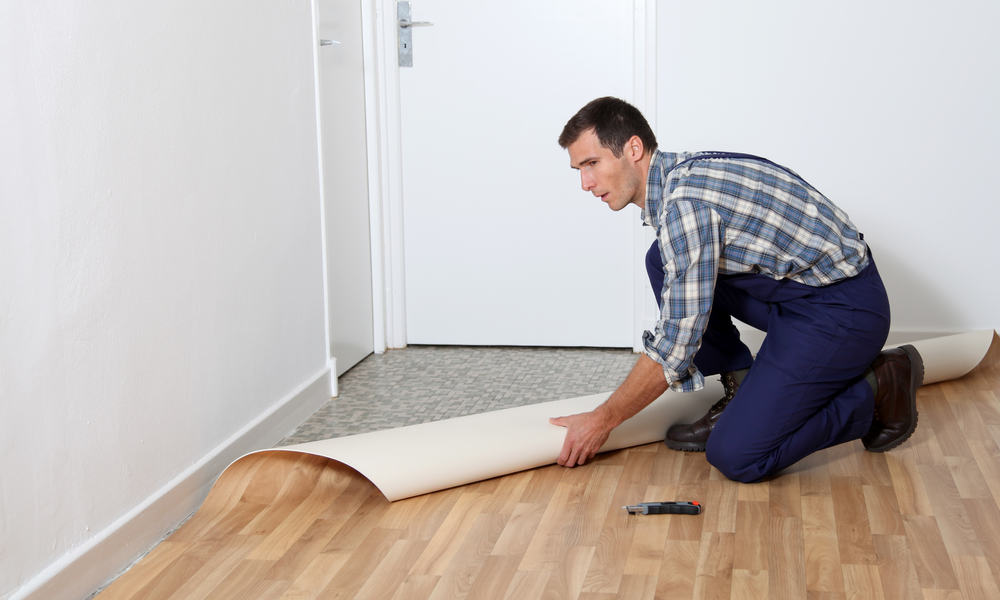
When choosing a flooring product, you want one that will give you the most years with few if any repair or replacement costs.
On average, vinyl lasts between 10 and 15 years. On the upside, the flooring will retain its glossy patina throughout its life span, after which the wear layer will wear off, exposing the underlying core.
Linoleum costs more than vinyl, but the cost is offset by the long lifespan of 20 to 40 years. However, the flooring fades with time and will show its age much faster. While some people like the faded appearance of an old linoleum floor, others find it unattractive.
Best for Lifespan: Linoleum
5. Comfort

Underfoot comfort is yet another factor you should pay attention to when choosing between linoleum vs. vinyl flooring.
Vinyl is sturdy and resilient, but it can also feel hard and cold underfoot. The feeling is particularly noticeable when vinyl is installed over a concrete subfloor. On the upside, vinyl is less noisy than other materials such as laminate.
On the other hand, linoleum feels softer while being resilient and steadfast. It is also quieter than vinyl, making it a perfect choice for multilevel buildings.
Best For Comfort: Linoleum
6. Cost

The upfront cost of purchasing vinyl is much lower compared to linoleum of the same size and quantity. Vinyl is also comparably low maintenance and does not need any special cleaning products or procedures, although it is best to clean your floors using gentle products.
Linoleum has a longer life span, but it can be quite expensive to purchase and can easily bump up the cost of your remodeling or new build project. The flooring also shows signs of aging and requires more maintenance to stay in tip-top condition.
When it comes to maintenance, vinyl is the lowest maintenance of the two flooring materials. Aside from basic mopping or vacuuming, no other maintenance routine is required.
Linoleum does not stand up well to harsh cleaning products, and according to the manufacturer, you may have to use specific cleaning products to avoid damaging your floor. The flooring material cannot take a lot of water from regular mopping. You will also need to seal your linoleum flooring at least twice a year.
Best for Cost: Vinyl
7. Environmental Impact
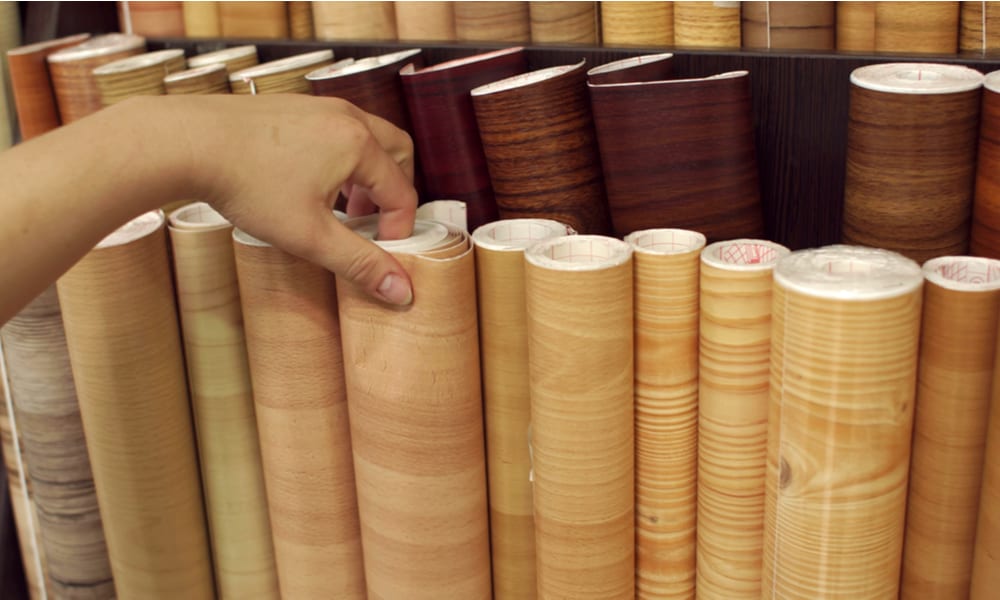
Vinyl and linoleum are made of vastly different materials. Vinyl is made of polyvinyl chloride and fiberglass, which are non-recyclable synthetic materials.
On the other hand, linoleum is made of natural materials, including linseed oil, cork dust, rosin, wood dust, and other recyclable materials. If you are looking for a flooring product with little impact on the environment, linoleum is a better choice. Remember that your linoleum floors will age faster and may need early replacement if you don’t like the look of aged linoleum floors.
Best For Environmental Impact: Linoleum
Bottom Line
Both linoleum and vinyl are strong and versatile flooring materials. But, you must weigh their pros and cons before selecting the one that meets your needs.
Linoleum has a longer lifespan, is made from biodegradable materials, and is water-resistant, comfortable, and silent underfoot. But, the flooring is more expensive, less waterproof, and will show signs of aging faster. If you don’t mind the yellowing patina of old linoleum and are keener on environmental sustainability, this flooring might be a good choice.
Vinyl retains its shiny appearance, is less prone to scratches and dents, and comes in numerous designs, patterns, and textures. It is low maintenance and relatively inexpensive. Vinyl is the better choice if you are looking for value for money and aesthetic appeal over time.